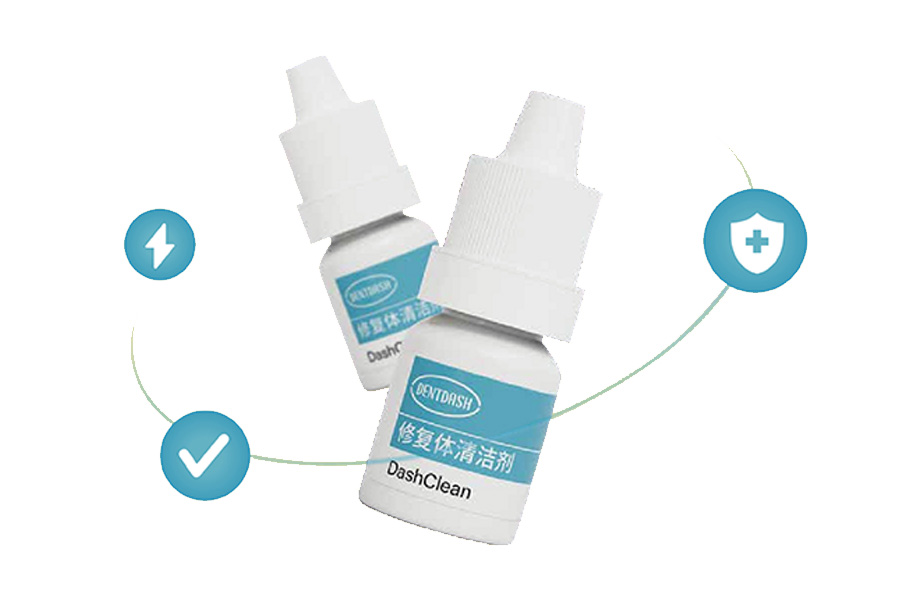
Restoration Cleaners
The restoration cleaner can effectively remove saliva, blood and grease pollution, and is suitable for a variety of materials such as zircon, ceramics, metals, etc. It is easy to use and significantly improves the bonding strength of the restoration after contamination. It is a key step to ensure the success of the restoration and reliable bonding.
Technical characteristics
| Project | Illustrate |
|---|---|
| Applicable materials | Zircon, ceramics, glass ceramics, lithium disilicate, metals, composite resins |
| Cleaning contaminant type | Saliva, blood, grease/oily substances |
| Clinical advantages | Significantly improve the bonding strength of contaminated zircon (compared with ultrasonic water washing/alcohol washing) |
| Data support | See the table below for bond strength test (MPa) |
Bond strength of contaminated zircon after different cleaning methods (MPa)
| Pollutants | Ultrasonic cleaning | Ultrasonic alcohol cleaning | DashClean |
|---|---|---|---|
| Saliva contamination | 17 | 19 | 28 |
| Blood contamination | 19 | 19 | 24 |
| Grease pollution | 14 | 14 | 14 |
| No pollution | – | – | 27 |
Procedure
- Post-trial processing
- Rinse the restoration thoroughly with clean water → air dry
- Apply cleaner
- Use a micro brush to apply a drop of DashClean to the restoration surface → Let stand for 20 seconds
- Cleaning residue
- Rinse thoroughly with clean water → air dry
- Subsequent bonding
- Continue according to adhesive/treatment instructions
Key clinical notes
The best solution for bonding zircon restorations
- Surface treatment:use 50 micron aluminum oxide sandblasting → Rinse with clean water → Air dry
- Cleaning after trying on:Special cleaning agents must be usedEliminate the effects of saliva contamination
- Adhesive selection:
- ✅ Usage Zircon treatment agent or 8th Generation Adhesive
- ❌ Banned silane coupling agents(Not effective for zircon)
- Adhesive material:
- ✅ Usage Resin cement
- ❌ Non-resin cements are prohibited(such as glass ionomer, zinc phosphate cement)

